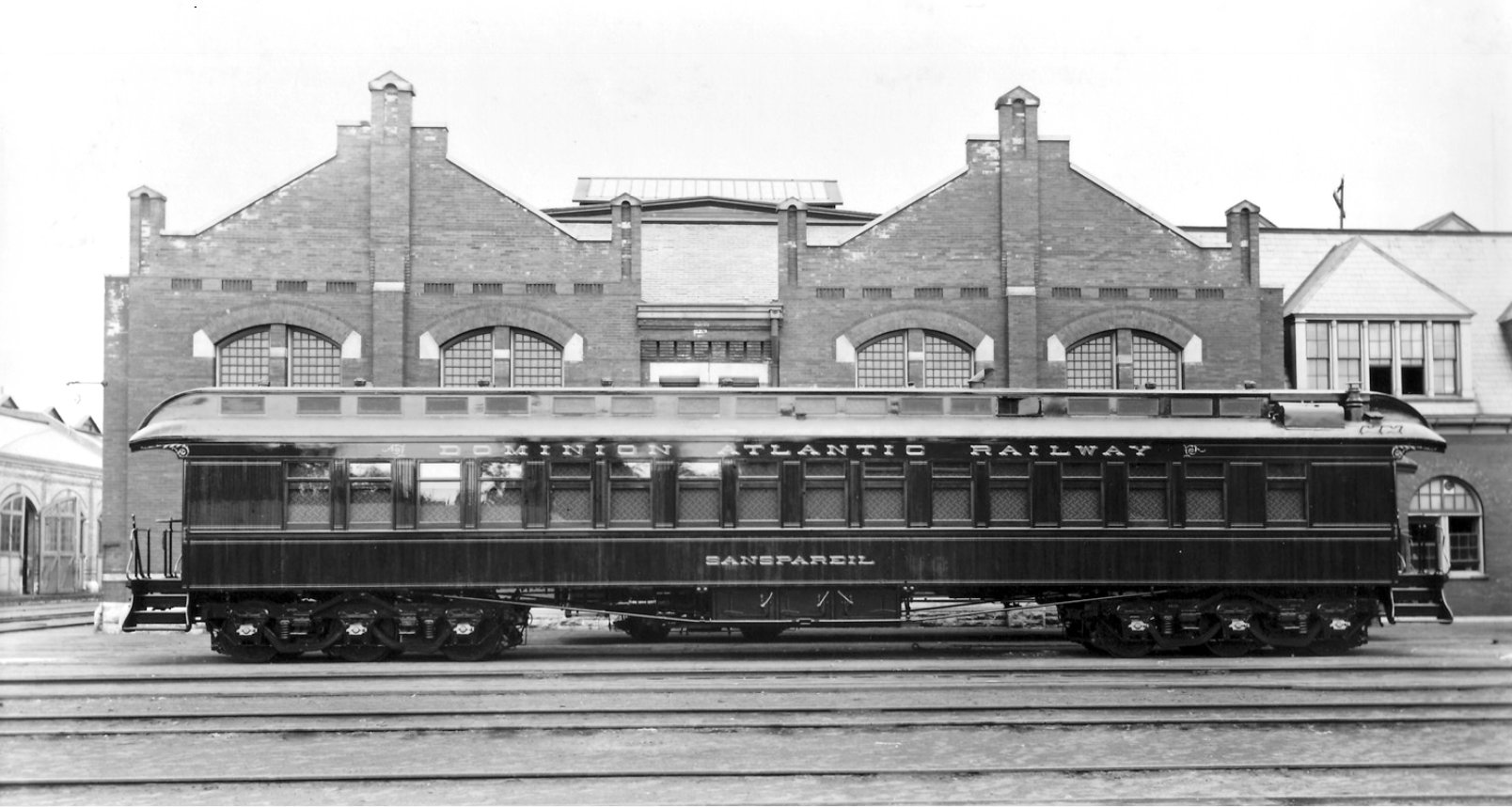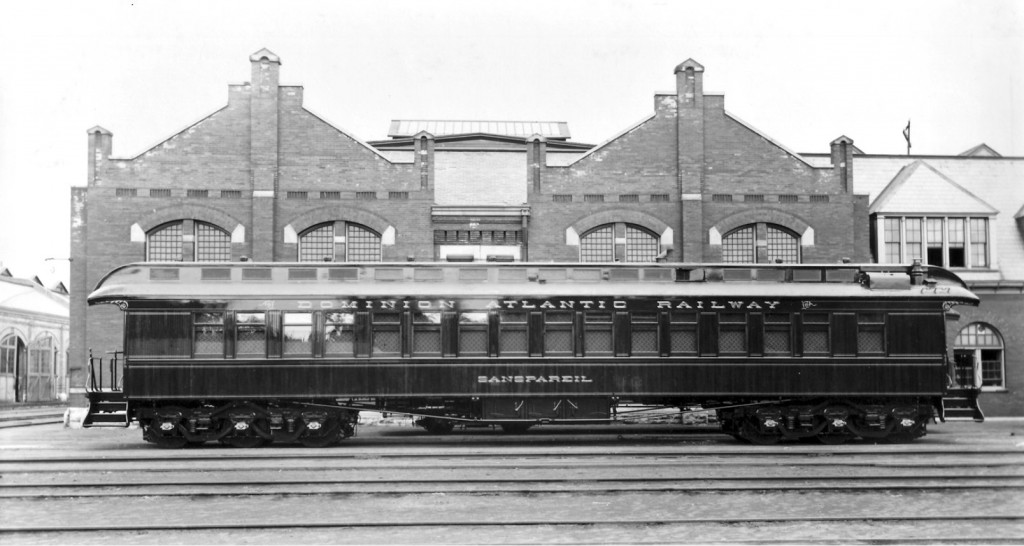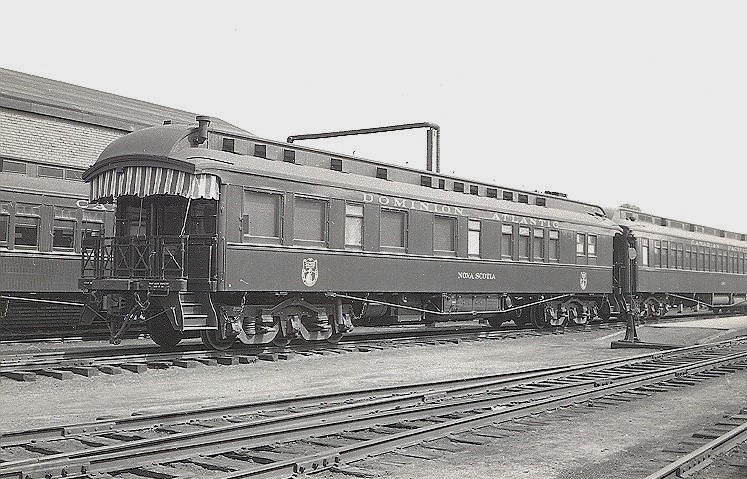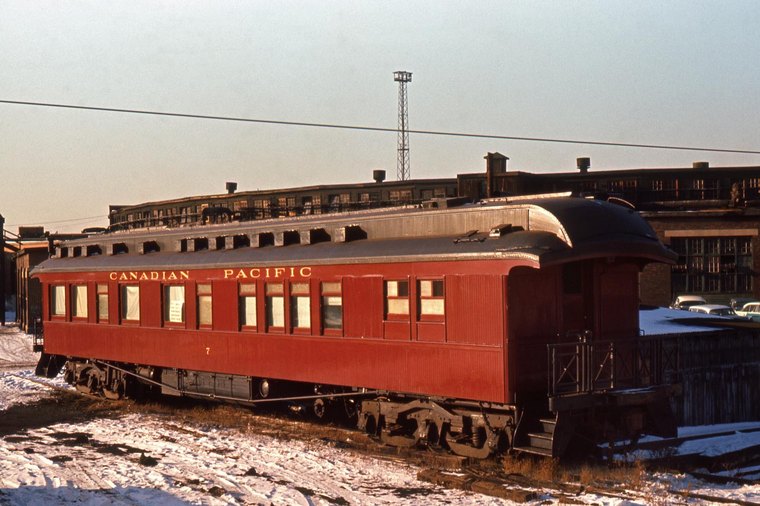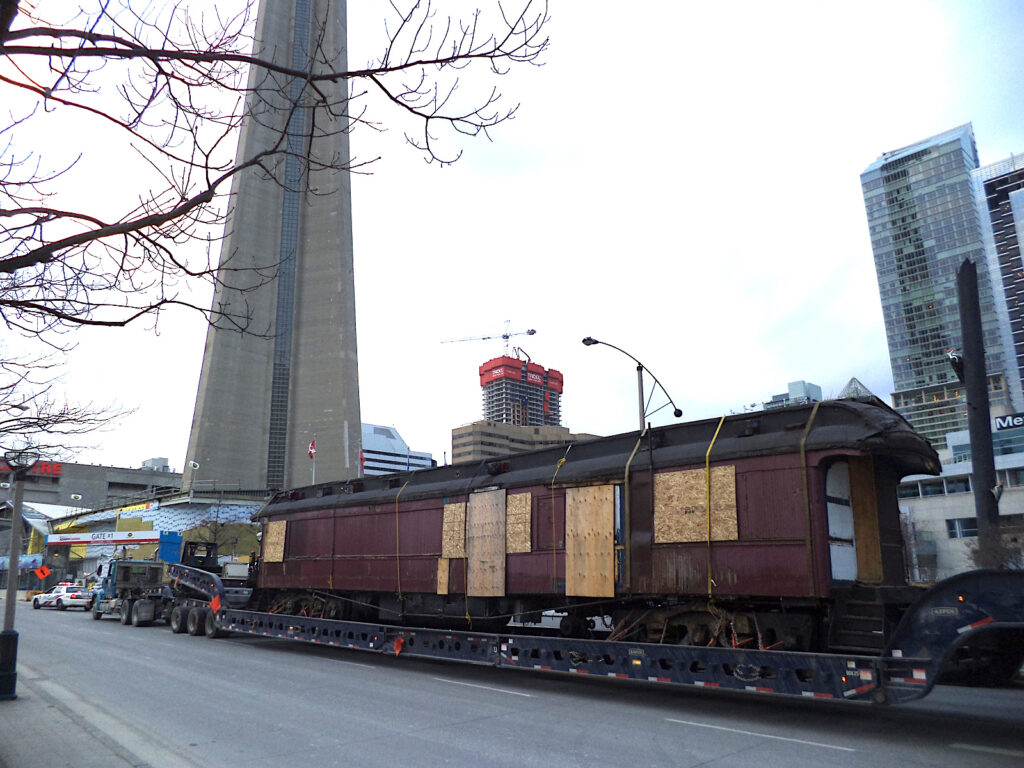Nova Scotia is a parlour car that was built as Sans Pareil (French for “incomparable” or “without equal”) for the Dominion Atlantic Railway in 1896. It was manufactured by the Pullman Company near Chicago at a cost of $11,972. It was frequently used to transport passengers on the Flying Bluenose, a passenger train which used to run between Yarmouth and Halifax in the province of Nova Scotia. The train was named after Canada’s most famous racing schooner. Many of the passengers on board the train were tourists who had come to Yarmouth from Boston and New York on company-owned Dominion Atlantic and Eastern Line steamships. Package tours were provided by the railway to enable Americans to explore the scenic highlights of the province. The Dominion Atlantic Railway was leased by the Canadian Pacific Railway in 1911 and was operated as a subsidiary from that point onward. One year later, the Sans Pareil parlour car was renamed Nova Scotia.
On December 6th, 1917, the Nova Scotia was parked in the North Street Station in Halifax. Aboard the car was the railway’s general manager George Graham and his family. While they ate breakfast that morning the Belgian Relief vessel Imo and the French munitions carrier Mont Blanc collided in Halifax harbour at 8:45 AM. Twenty minutes later the munitions ship blew up in the largest man-made explosion prior to Hiroshima. 1,600 people died and 9,000 were injured in the worst disaster in Canadian history. The railway facilities in Halifax were devastated including severe damage to the North Street Station, where several passengers and railway employees were killed. The car sheltered Graham and his family and he quickly made his way to Rockingham, the nearest surviving telegraph station about three kilometres away and ordered a relief train from Kentville. It brought doctors, nurses, supplies and rescue equipment the afternoon of the explosion and was one of the first relief trains to arrive in Halifax. Within hours of the explosion, Toronto department store magnate Sir John Craig Eaton filled a train with relief supplies from the Eaton’s warehouses and was on his way to Halifax. In the next week, special relief trains from central Canada and the north-eastern United States flowed into the stricken city, including two from Toronto on December 10th.
The Nova Scotia remained on the Dominion Atlantic roster until 1963 when its parent company briefly used it as a business car assigned to the Superintendent at Farnham, Quebec. Later the same year the car was purchased by the Upper Canada Railway Society (UCRS), a Toronto-based organization of train enthusiasts responsible for operating numerous excursions using historic equipment across Ontario between the 1940’s and the 1980’s. The car was restored to operating condition by UCRS volunteers and brought up the rear of numerous excursions throughout the 1960’s. In a 1967 episode of CBC’s Telescope documentary series titled The Canadian Meal and hosted by Canadian history author Pierre Berton, the Nova Scotia was used as a setpiece for his discussion of the part played by railways in Canada’s culinary industry. The Nova Scotia was sold to the London & Middlesex Historical Society in London, Ontario after it was replaced by a new car, Cape Race, in UCRS excursion service. The car remained dormant for four years until it was purchased by the Ossawippi Express Dining Cars Restaurant in Orillia, Ontario in December 1973. This was a popular themed restaurant that employed several railway cars as part of its decor. Unfortunately, Nova Scotia’s interior was completely gutted to suit the needs of the restaurant.
After the restaurant closed in 2010 all eight passenger cars in its collection came under ownership of the City of Orillia, who sold them to a variety of private interests. One of these interests offered Nova Scotia to the Toronto Railway Museum and to cover part of the costs of delivering it there. The TRHA completed two thorough inspections of the car, one of the exterior and another of the interior and found it worthy of preservation. It was acquired and transported by truck to the museum shortly thereafter. It was moved inside the roundhouse to avoid exposing it to the elements any further but efforts to restore it were slow over the following years. The interior was used as office space by museum volunteers and staff until somewhat recently. Restoration of Nova Scotia ramped up towards the end of the 2010’s and approximately 1/3 of the car’s interior was restored in time to be used for a special display on Remembrance Day 2019. Further restoration of the interior has similarly occurred in stages. Our volunteers have found traces of the original Dominion Atlantic Railway paint and damage from the Halifax Explosion on parts of Nova Scotia.


